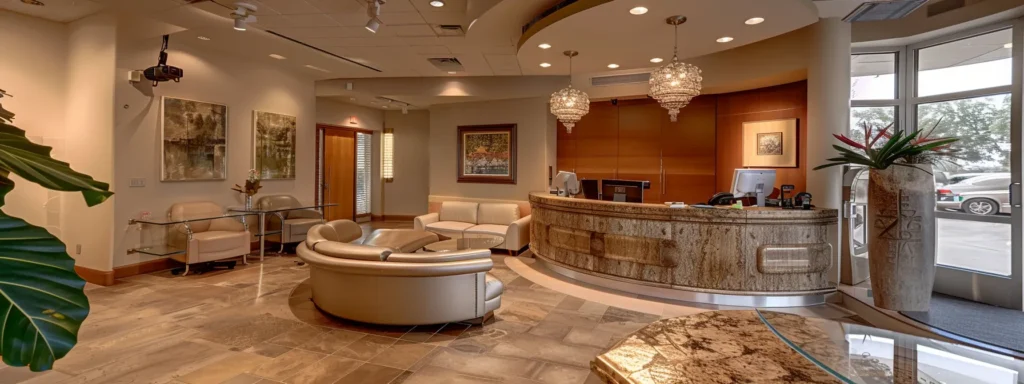Chronic back pain affects millions of Americans, creating barriers to work, relationships, and daily activities. Non-surgical treatment options offer hope for lasting relief without the risks associated with invasive procedures. Joseph Gleed, LCSW, CCTP, brings over 20 years of experience helping veterans and first responders manage chronic pain conditions, understanding how trauma and physical discomfort interconnect in complex ways.
Advanced diagnostics have revolutionized non-surgical care approaches, enabling tailored strategies that address root causes rather than just symptoms. These evidence-based treatments prove that surgery isn’t always necessary for effective pain management. Most importantly, they offer safer alternatives that often produce better long-term outcomes.
Understanding the Root Causes of Your Pain
Identifying precise chronic back pain causes proves paramount to effective treatment success. Muscle imbalances and poor posture represent common culprits stemming from daily routines and workplace habits. By pinpointing these specific issues, therapists devise targeted exercises that strengthen weak areas while correcting postural misalignments.
Desk workers with lower back pain often benefit from targeted core stability exercises that address prolonged sitting positions. These personalized interventions tackle the underlying mechanical problems rather than simply masking pain symptoms. Physical assessment reveals specific muscle weaknesses and movement patterns that contribute to ongoing discomfort.
Psychological stress manifests physically through tightened muscles that create persistent pain cycles. Modalities like cognitive-behavioral therapy and mindfulness practices offer non-pharmaceutical approaches to stress-related pain management. These interventions often result in substantial improvement without requiring invasive procedures or long-term medication use.
Lifestyle factors such as weight gain and sedentary habits compound existing back pain problems significantly. Comprehensive approaches involve registered dietitians and fitness coaches crafting personalized health plans. Through dietary changes and increased physical activity, patients experience pain relief alongside broader health benefits that support long-term recovery.
Strategic Non-Surgical Treatment Approaches
Non-surgical interventions form the cornerstone of effective chronic back pain treatment strategies. These approaches focus on resolving pain by addressing root causes, reducing surgery dependence while providing sustainable relief options. Targeted physical therapies create personalized exercise regimens that improve strength and flexibility where deficiencies contribute to pain.
Pain management practices include heat therapy, electrical stimulation, and professional manual manipulation techniques. These methods reduce inflammation while enhancing circulation, delivering comfort without surgical intervention risks. Immediate relief combines with long-term healing to create comprehensive treatment experiences.
Early intervention plays critical roles in successful chronic back pain management outcomes. Implementing therapies at pain onset often halts condition progression, preventing future surgical procedure needs. Early treatment mitigates pain before it becomes entrenched, ensuring better quality of life maintenance for patients seeking relief.
Advanced Diagnostic Methods for Accurate Treatment
Accurate diagnosis provides the foundation for managing chronic back pain without surgical intervention. This process requires discerning examination beyond surface symptoms to identify true pain sources. Daily habits and routines frequently contribute to chronic conditions, with simple activities like desk sitting or heavy lifting creating cumulative damage over time.
Healthcare professionals observe these habits and suggest practical modifications to alleviate existing pain. Ergonomic chair recommendations or safer lifting technique demonstrations help prevent further strain while addressing current discomfort. These behavioral changes often produce dramatic improvements in pain levels and functional capacity.
Underlying health conditions such as arthritis or osteoporosis manifest as chronic back pain symptoms. Enhanced imaging techniques and diagnostic tools uncover these conditions that may not appear immediately apparent. Advanced medical diagnostics enable precise pain origin determination through MRI scans, X-rays, and other detailed internal spine structure visualization tools.
Understanding Surgery Risks and Alternatives
Back surgery involves inherent risks that may outweigh benefits, especially when non-structural factors cause pain. Surgical procedures carry possibilities of complications including infections, blood clots, and anesthesia reactions. These risks introduce outcome uncertainty while highlighting the importance of considering safer non-surgical interventions whenever possible.
Post-surgery, many individuals report ongoing pain that questions surgical effectiveness for their specific conditions. This persistent discomfort suggests root pain causes might be non-structural and manageable through less invasive methods. Patients with muscle-related pain often benefit more from physical therapy than surgical procedures.
Non-surgical approaches provide effective pain relief without surgery-associated risks when properly applied. Healthcare providers play pivotal roles in thoroughly assessing each chronic back pain case. They advise patients on appropriate action courses, often exploring all possible non-surgical routes before considering surgical options.
Overcoming Treatment Bias in Healthcare
Dispelling deep-rooted preferences for surgical solutions proves essential for effective chronic back pain treatment. Patient education serves as the first frontier in this battle against surgical bias. Clear, understandable facts about surgery risks and success rates compared to non-invasive treatments enable more informed decision-making.
Simple discussions about physical therapy or lifestyle change potential for pain relief without operations can prove eye-opening. Providers require education to change current treatment paradigms through training sessions and updated guidelines stressing non-surgical intervention effectiveness. Sharing studies demonstrating alternative therapy success inspires confidence in recommending these options over surgery.
Countering misconceptions with statistics and real-world outcomes establishes foundations for trust in less invasive treatments. Success stories of non-surgical recoveries become more common as both healthcare communities and the public view these options as legitimate preferences. Evidence-based approaches shift focus toward proven non-surgical methods backed by encouraging outcome data.

Renova’s Evidence-Based Treatment Options
Renova Wellness & Consulting offers strategic non-surgical therapy suites for chronic back pain that prioritize patient health and recovery. Each therapy receives selection and application based on rigorous evidence ensuring highest pain relief and functional improvement prospects. Rehabilitative exercise programs form cornerstones of Renova’s non-surgical approaches, designed to strengthen bodies while correcting pain-contributing imbalances.
Tailored programs include stability exercises, stretching, and aerobic conditioning aimed at alleviating pain while preventing future injuries. Advanced procedures like epidural steroid injections address cases where inflammation underlies pain sources. These precision-delivered injections provide significant relief as parts of broader pain management plans.
Comprehensive approaches ensure innovative, evidence-based treatments work synergistically rather than in isolation. Combining physical rehabilitation with targeted procedures creates effective, efficient treatment plans tailored to specific patient needs and pain mechanisms. Joseph Gleed’s extensive experience with complex trauma and chronic pain conditions informs these individualized treatment strategies.
The clinic’s multifaceted methodology recognizes that chronic back pain often results from complex, interrelated factors. Utah residents benefit from these integrated approaches that address physical, emotional, and lifestyle contributors to persistent pain conditions.
Measuring Treatment Success and Progress
Measuring non-surgical treatment success for chronic back pain requires systematic monitoring and specific evidence-based criteria. Tangible improvements in daily functionality and pain levels demonstrate that non-surgical treatments work effectively. Consistent pain reductions and increased everyday task abilities show positive treatment outcomes.
Patients returning to work pain-free or recovering mobility for favorite activities represent meaningful success markers. Quantitative metrics include range of motion measurements, strength tests, and pain scale ratings that track objective improvements. When indicators reach predefined goals or thresholds, patients gain maximum benefits from current treatment approaches.
Progress monitoring ensures treatments remain on track while identifying necessary adjustments for optimal outcomes. Healthcare providers may reconsider selected therapies or consult on potential surgical options when progress stalls or criteria remain unmet. These decisive actions follow thorough evidence examination, ensuring escalation decisions prioritize patient best interests throughout treatment journeys.
Comprehensive Patient Support and Resources
Renova Wellness & Consulting delivers dedicated guidance and resources assisting individuals in effective chronic back pain management. Expert medical care involves careful assessment and monitoring by healthcare professionals who construct detailed treatment plans addressing specific pain causes. Renova’s expertise ensures every plan grounds itself in latest medical research designed for optimal outcomes.
Treatment plan customization develops with patient lifestyles, preferences, and health goals in mind, ensuring practical accessibility. This includes setting achievable pain management goals while integrating preferred non-invasive therapies into regular routines. Individualized care approaches build lasting patient relationships, fostering trusted healing environments conducive to chronic back pain recovery.
Professional guidance extends beyond treatment sessions through educational resources, home exercise programs, and ongoing support systems. Utah communities benefit from this comprehensive care model that addresses immediate pain relief alongside long-term prevention strategies. The emphasis on patient empowerment creates sustainable recovery approaches that extend well beyond clinical settings.
Prevention and Self-Care Strategies
Preventive care and self-managed strategies prove imperative for controlling chronic back pain and preventing recurrence. Renova advocates proactive approaches, equipping patients with knowledge and tools necessary for self-directed health maintenance. Patient education on daily behavior impacts helps individuals understand how simple activities affect back health significantly.
Posture changes, correct lifting techniques, and regular sitting breaks prevent back strain effectively. Renova’s team guides patients through practical changes offering advice tailored to individual routines and work environments. Routine exercise and movement incorporation constitutes another preventive strategy with home and workplace exercises designed to strengthen backs while increasing flexibility.
Mental well-being importance in managing back pain includes stress and tension management since these factors exacerbate physical pain. Mindfulness strategies, deep-breathing exercises, and adequate rest become treatment plan components. These self-care techniques mitigate psychological factors contributing to chronic back pain, creating comprehensive preventive approaches.
The following self-care elements support long-term back health:
- Daily posture awareness and ergonomic workspace setup
- Regular stretching routines targeting back and supporting muscle groups
- Stress management techniques including meditation and relaxation exercises
- Proper sleep positioning and supportive mattress selection
- Gradual activity progression to avoid injury during recovery periods
These strategies empower patients to take active roles in their recovery while building sustainable habits that prevent future pain episodes.
Transforming Chronic Pain Management
Chronic back pain management progressively tilts toward non-surgical options due to increasing supportive research and proven outcomes. Renova’s adherence to individualized care means treatment plans receive tailoring for each patient’s specific symptoms, lifestyle, and preferences. This personalized approach ensures treatments directly target unique pain sources and management needs.
Multifaceted treatment strategies recognize that chronic back pain results from complex, interrelated factors requiring comprehensive approaches. Renova combines multiple therapeutic modalities, including physical therapy with cognitive-behavioral strategies, ensuring holistic pain relief that addresses all contributing elements. Joseph Gleed’s specialized training in trauma-informed care brings unique perspectives to chronic pain treatment.
Renova’s commitment to staying at evidence-based care forefront assures patients of the latest, most effective treatments available. The clinic’s approach receives continuous refinement based on new research, guaranteeing advanced treatment delivery without undue surgical intervention reliance. This comprehensive philosophy positions non-surgical options as primary treatment choices rather than last resorts.
Request your appointment today!
Renova Wellness & consulting
801-317-8522 & info@renovawc.com
2332 W 12600 S #2B
Riverton, UT 84065
Frequently Asked Questions
What non-surgical treatments work best for chronic back pain?
Non-surgical treatments, such as physical therapy, targeted exercises, and advanced procedures like epidural steroid injections, have been proven to effectively manage chronic back pain. A tailored approach that addresses your specific pain causes is key to achieving lasting relief.
Can I avoid surgery if I have persistent back pain?
Yes, many people find relief from persistent back pain with non-surgical treatments. Options such as rehabilitative exercises, pain management techniques, and lifestyle adjustments can greatly reduce or even eliminate your need for surgery.
How do I know if non-surgical back pain treatment is right for me?
Determining the right approach to your back pain begins with a thorough assessment by a healthcare provider. Non-surgical options are often recommended first and can be very effective, especially when the pain is not caused by severe structural issues.





